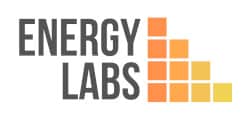When considering a heat recovery system for your home, one concern that many Australian homeowners have is whether or not these systems are safe for their families and pets. The answer, like with most things in life, is that it depends.
First and foremost, it’s important to note that the safety of a heat recovery system will depend on the specific system you choose, as well as the quality of the installation and the regular maintenance that is carried out.
For example, some heat recovery systems use a mechanical ventilation process that can be quite loud, while others use a passive ventilation process that is much quieter. Additionally, the location of the unit within the home can also affect the amount of space it takes up. For example, a unit located in the attic or roof may take up less space than one located on an exterior wall.
When it comes to safety, it’s also worth noting that heat recovery systems are becoming more advanced, with new designs and technologies being developed that are more safe and secure. Additionally, it’s important to ensure that the heat recovery system is installed by a qualified and experienced professional to ensure that it is installed correctly and that you have a proper understanding of how to use it.
In terms of maintenance, it’s worth noting that heat recovery systems require regular maintenance to ensure optimal performance and
longevity. This can include tasks such as cleaning or replacing filters. Regular maintenance and care can also help to ensure that the system is operating safely.
It’s also important to note that heat recovery systems do not produce any harmful emissions or pollutants, making them safe for your family and pets. Additionally, these systems can also help to improve indoor air quality by removing pollutants and allergens from the air.
Additionally, most heat recovery systems come with safety features, such as automatic shut-off switches and overheat protection, to ensure that the system is operating safely and to prevent any potential hazards.
It’s also worth noting that there are government rebates and incentives available for homeowners who choose to install a heat recovery system. For example, the Australian Government’s Small-scale Technology Certificates (STCs) scheme provides homeowners with financial incentives for installing renewable energy systems, including heat recovery systems.
In conclusion, the safety of a heat recovery system will depend on the specific system you choose, as well as the quality of the installation and the regular maintenance that is carried out. Additionally, it’s important to ensure that the heat recovery system is installed by a qualified and experienced professional to ensure that it is installed correctly and that you have a proper understanding of how to use it. With regular maintenance and care, a heat recovery system can last for many years and with the government rebates and incentives available it can be a smart investment for your home. It’s important to do your research, consider the specific requirements of your home, consult with professionals and check for government rebates and incentives before making a decision about installing a heat recovery system in your home.
